armed forces
We are witnessing the future of war on the battlefields of Ukraine
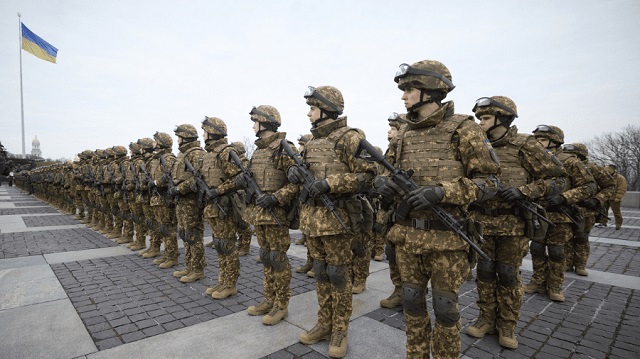
From the MacDonald Laurier Institute
By Richard Shimooka
We would be wise to learn the lessons the Ukrainians have fought so hard to learn
Historically, certain wars have stimulated the development of future defence thinking. The 1905 Russo-Japanese War previewed many features of the Great War a decade later, including the lethality of machine guns and howitzers, as well as the ubiquity of trench warfare. The 1973 Yom Kippur War between Israel and its Arab Neighbours was particularly influential for present wars—the Arab combatants’ use of new anti-tank guided missiles challenged many existing doctrines. This is not to say that all groups absorb the lessons directly or effectively. Many of the great powers, including Russia (who fought in the 1905 war), failed to adopt the lessons laid bare in that conflict and suffered grievous casualties in the first years of World War I as a result.
Approaching two years since the invasion, the war in Ukraine has the potential to have an outside impact on the future of war for a variety of reasons. Its timing comes as a number of new technologies have emerged, many of which have come from the civilian space. These include the proliferation of drones, low-cost satellites, and high bandwidth networking—all of which to date have had major effects on the outcome of the war.1 Over the past two years, both sides have adapted their doctrine and capabilities to reflect a cycle of learning and adaptation which gives a clearer understanding of where these technologies are headed.
Some of these trends are a validation of overriding trends in warfare, particularly around the collection and use of data afforded by networked systems. This is evident in the maturation of the “reconnaissance-strike” complexes in Russian and Ukrainian doctrine. Essentially, this is a streamlining of the process of identifying and attacking targets with precision fire, usually from some form of artillery. The United States and NATO have been pursuing a roughly similar—but much more advanced and all-encompassing—concept known as “multi-domain operations.” There are several common denominators between both doctrines, including the effort to expand detection over wider areas, as well as hastening the decision-making process which can improve the lethality of any weapon system attached to it. While it may not be able to employ traditional airpower, the use of long-range artillery (including the recently provided ATACMS missile system) shows the effectiveness of this approach to war. It also allows for a greater economy of force—a critical consideration for Ukraine due to its disadvantageous economic and strategic situation facing a state three times its size.
A key feature of progress in this area is its organic nature. Since the start of direct hostilities in 2014, Ukraine has done well to build up some of these connective capabilities adapting civilian systems for military purposes, such as the Starlink satellite network and apps for mobile devices. A large portion are ground-up approaches, developed even by military units to suit their particular operational needs. This was part of the total war approach that the Ukrainian government has instituted, often leveraging their emerging tech industries to develop new capabilities to fight against the Russian Federation. Many allies have similar efforts, but too often focus remains on a very centralized, top-down approach, which has led to substandard outcomes. Some balance between the two poles is likely ideal.
Another major consideration is the revolutionary impact of drones on air warfare. Traditional manned airpower, like F-16, Mig-29s, and even attack helicopters, remain as relevant as ever in Ukraine. While no side possesses true air superiority, some localized control has been established for short periods, resulting in potentially decisive consequences. However, the war has followed the trend of other recent wars with low-cost, attritable drones playing an important role. While this has been evident in the strike-reconnaissance doctrine discussed above, the so-called kamikaze loitering drones, such as the Russian Lancet and armed first-person view commercial drones, have played an important role as well.
One important aspect is what is known as the “mass” of these capabilities—not individually, but as a collective system or swarm of multiple individual units that can be lost without a major degradation of their lethality. At present, the link between traditional and emerging airpower domains is fairly disjointed over the battlefield in Ukraine, perhaps due to lingering service parochialism. But once combined they will only multiply each other’s lethality.
There is, however, one question concerning this new frontier of airpower’s ultimate influence in the future. It hinges significantly on the efficacy of new anti-drone systems, like those being developed by the United States Army and NATO allies. These potentially may blunt or even remove the deadly threat these UAVs pose to modern ground forces. But as of now they are in their infancy and very few are present in Ukraine today. If they are unable to make a major impact, then the future of conflict will be radically different.
Over the past thirty years, Canada, the United States, and its allies have often been able to deploy troops abroad to many stabilization and peacekeeping missions, in part due to the relatively benign threat environment they were entering. There was confidence that deployed soldiers would not incur significant casualties, which would arouse domestic opposition to the missions themselves. If the lethality of these unmanned drone systems remains unchecked, then, considering their greater ubiquity, it may drastically constrain the ability of Western countries to intervene and assert their muscle abroad, even in low-risk environments.
Finally, and perhaps most critically, is the need for an adaptive defence industrial base (another word for military supply chains) with the capacity to meet a wide need for war. The Russian Federation, for example, faced wide-ranging and intrusive sanctions from the start of the conflict that precluded them from obtaining a number of key resources for their war effort, ranging from raw materials to advanced technology components. They have been able to weather these challenges due to a combination of factors: a deliberate effort to develop an autarkic industrial base that started after 2014, a less technologically advanced military, and sanctions-avoiding policies such as smuggling and diversifying their foreign supplier base to more reliable allies.
While Western allies are unlikely to face the same restrictions in a potential future conflict on the scale that Russia has, in some ways they have greater challenges. These countries rely on much more sophisticated military capabilities that have levels of complexity far in excess of Russian systems. The sheer diversity in all of the raw materials inputs and various subcomponent providers, as well as the networks to make them all work, means that they are actually much easier to disrupt. Shades of this were evident during the initial months of the COVID-19 epidemic when the production of civilian goods was affected by shortages and supply chain disruptions.
Furthermore, underinvestment in the defence industrial base has left the capacity to ramp up production in most areas perilously slow, even two years after the conflict started.
More effort must be spent on creating a much more resilient industrial base that has the capacity to ramp up production to meet the needs of modern war. This requires significant front-end investment by governments in capacity building as no private firm is willing to spend money in that fashion without any guarantee of a return. At the same time, building capacity must be targeted and appropriate to the actual needs of Canada and its allies—taking lessons from Ukraine without understanding their context would be a mistake. That war and its material demands are unique to it.2 Discerning the actual needs and developing accordingly should be done through careful analysis and wargaming, much like the recent Center for Strategic International Studies analysis on U.S. missile needs in a potential war against China has done.
In the end, a clear trend that seems to bind all of these areas is the need for adaptability and critical thinking. Warfare is fast becoming more lethal and decisive. Modern armies must be able to respond to those changes as quickly as they occur—or better yet, lead those changes against their adversaries. That, for one, cannot occur in an organization that is continually starved for funding like the Canadian Armed Forces is today.
But it may also require a radical reorganization and re-think of how defence policy, strategy, operations, and doctrine are developed and implemented—not to mention personnel and industrial policy. As the conflict in Ukraine has laid bare, bringing in the brightest minds and giving them greater leeway to develop responses is key, as is harnessing the potential and building the capacity of domestic industrial bases. These are essential and urgent lessons we must learn. They have been hard won by the sacrifices of the Ukrainian people for our benefit. It would be a shame to waste them.
Richard Shimooka is a Hub contributing writer and a senior fellow at the Macdonald-Laurier Institute who writes on defence policy.
armed forces
Mark Carney Thinks He’s Cinderella At The Ball
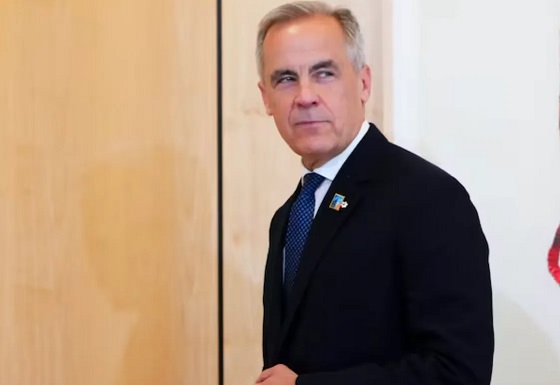
And we all pay when the dancing ends
How to explain Mark Carney’s obsession with Europe and his lack of attention to Canada’s economy and an actual budget?
Carney’s pirouette through NATO meetings, always in his custom-tailored navy blue power suits, carries the desperate whiff of an insecure, small-town outsider who has made it big but will always yearn for old-money credibility. Canada is too young a country, too dynamic and at times a bit too vulgar to claim equal status with Europe’s formerly magnificent and ancient cultures — now failed under the yoke of globalism.
Hysterical foreign policy, unchecked immigration, burgeoning censorship and massive income disparity have conquered much of the continent that many of us used to admire and were even somewhat intimidated by. But we’ve moved on. And yet Carney seems stuck, seeking approval and direction from modern Europe — a place where, for most countries, the glory days are long gone.
Carney’s irresponsible financial commitment to NATO is a reckless and unnecessary expenditure, given that many Canadians are hurting. But it allowed Carney to pick up another photo of himself glad-handing global elites to whom he just sold out his struggling citizens.
From the Globe and Mail
“Prime Minister Mark Carney has committed Canada to the biggest increase in military spending since the Second World War, part of a NATO pledge designed to address the threat of Russian expansionism and to keep Donald Trump from quitting the Western alliance.
Mr. Carney and the leaders of the 31 other member countries issued a joint statement Wednesday at The Hague saying they would raise defence-related spending to the equivalent of 5 per cent of their gross domestic product by 2035.
NATO Secretary-General Mark Rutte said the commitment means “European allies and Canada will do more of the heavy lifting” and take “greater responsibility for our shared security.”
For Canada, this will require spending an additional $50-billion to $90-billion a year – more than doubling the existing defence budget to between $110-billion and $150-billion by 2035, depending on how much the economy grows. This year Ottawa’s defence-related spending is due to top $62-billion.”
You’ll note that spending money we don’t have in order to keep President Trump happy is hardly an elbows up moment, especially given that the pledge followed Carney’s embarrassing interactions with Trump at the G7. I’m all for diplomacy but sick to my teeth of Carney’s two-faced approach to everything. There is no objective truth to anything our prime minister touches. Watch the first few minutes of the video below.

The portents are bad. This from the Globe:
We are poorer than we think. Canadians running their retirement numbers are shining light in the dark corners of household finances in this country. The sums leave many “anxious, fearful and sad about their finances,” according to a Healthcare of Ontario Pension Plan survey recently reported in these pages.
Fifty-two per cent of us worry a lot about our personal finances. Fifty per cent feel frustrated, 47 per cent feel emotionally drained and 43 per cent feel depressed. There is not one survey indicator to suggest Canadians have made financial progress in 2025 compared with 2024.
The video below is a basic “F”- you to Canadians from a Prime Minister who smirks and roles his eyes when questioned about his inept money management.
He did spill the beans to CNN with this unsettling revelation about the staggering numbers we are talking about:
Signing on to NATO’s new defence spending target could cost the federal treasury up to $150 billion a year, Prime Minister Mark Carney said Tuesday in advance of the Western military alliance’s annual summit.
The prime minister made the comments in an interview with CNN International.
“It is a lot of money,” Carney said.
This guy was a banker?
We are witnessing the political equivalent of a vain woman who blows her entire paycheque to look good for an aspirational event even though she can’t afford food or rent. Yes, she sparkled for a moment, but in reality her domaine is crumbling. All she has left are the photographs of her glittery night. Our Prime Minister is collecting his own album of power-proximity photos he can use to wallpaper over his failures as our economy collapses.
The glass slipper doesn’t fit.
Trish Wood is Critical is a reader-supported publication.
To receive new posts and support my work, consider becoming a free or paid subscriber.
Invite your friends and earn rewards
armed forces
It’s not enough to just make military commitments—we must also execute them
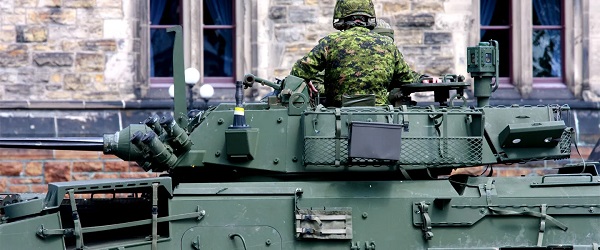
From the Fraser Institute
By Jake Fuss and Grady Munro
To reach 2 per cent of GDP this year, the federal government is committing an additional $9.3 billion towards the military budget. Moreover, to reach 3.5 per cent of GDP by 2035, it’s estimated the government will need to raise yearly spending by an additional $50 billion—effectively doubling the annual defence budget from $62.7 billion to approximately $110 billion.
As part of this year’s NATO summit, Canada and its allies committed to increase annual military spending to reach 5 per cent of gross domestic product (GDP) by 2035. While this commitment—and the government’s recent push to meet the previous spending target of 2 per cent of GDP—are important steps in fulfilling Canada’s obligations to the alliance, there are major challenges the federal government will need to overcome to execute these plans.
Since 2014, members of the North Atlantic Treaty Organization (NATO) have committed to spend at least 2 per cent of GDP (a measure of overall economic output) on national defence. Canada had long-failed to fulfill this commitment, to the ire of our allies, until the Carney government recently announced a $9.3 billion boost to defence spending (up to a total of $62.7 billion) that will get us to 2 per cent of GDP during the 2025/26 fiscal year.
However, just as Canada reached the old target, the goal posts have now moved. As part of the 2025 NATO summit, alliance members (including Canada) committed to reach an increased spending target of 5 per cent of GDP in 10 years. The new target is made up of two components: core military spending equivalent to 3.5 per cent of GDP, and another 1.5 per cent of GDP for other defence-related spending.
National defence is a core function of the federal government and the Carney government deserves credit for prioritizing its NATO commitments given that past governments of different political stripes have failed to do so. Moreover, the government is ensuring that Canada remains in step with its allies in an increasingly dangerous world.
However, there are major challenges that arise once you consider how the government will execute these commitments.
First, both the announcement that Canada will reach 2 per cent of GDP in military spending this fiscal year, and the future commitment to spend up to 3.5 per cent of GDP on defence by 2035, represent major fiscal commitments that Canada’s budget cannot simply absorb in its current state.
To reach 2 per cent of GDP this year, the federal government is committing an additional $9.3 billion towards the military budget. Moreover, to reach 3.5 per cent of GDP by 2035, it’s estimated the government will need to raise yearly spending by an additional $50 billion—effectively doubling the annual defence budget from $62.7 billion to approximately $110 billion. However, based on the last official federal fiscal update, the federal government already plans to run an annual deficit this year—meaning it spends more than it collects in revenue—numbering in the tens of billions, and will continue running large deficits for the foreseeable future.
Given this poor state of finances, the government is left with three main options to fund increased military spending: raise taxes, borrow the money, or cut spending in other areas.
The first two options are non-starters. Canadian families already struggle under a tax burden that sees them spend more on taxes than on food, shelter, and clothing combined. Moreover, raising taxes inhibits economic growth and the prosperity of Canadians by reducing the incentives to work, save, invest, or start a business.
Borrowing the money to fund this new defence spending will put future generations of Canadians in a precarious situation. When governments borrow money and accumulate debt (total federal debt is expected to reach $2.3 trillion in 2025-26), the burden of this debt falls squarely on the backs of Canadians—likely in the form of higher taxes in the future. Put differently, each dollar we borrow today must be paid back by more than a dollar in higher taxes tomorrow.
This leaves cutting spending elsewhere as the best option, but one that requires the government to substantially readjusts its priorities. The federal government devotes considerable spending towards areas that are not within its core responsibilities and which shouldn’t have federal involvement in the first place. For instance, the previous government launched three major initiatives to provide national dental care, national pharmacare and national daycare, despite the fact that all three areas fall squarely under provincial jurisdiction. Instead of continuing to fund federal overreach, the Carney government should divert spending back to the core function of national defence. Further savings can be found by reducing the number of bureaucrats, eliminating corporate welfare, dropping electric vehicle subsidies, and many other mechanisms.
There is a fourth option by which the government could fund increased defence spending, which is to increase the economic growth rate within Canada and enjoy higher overall revenues. The problem is Canada has long-suffered a weak economy that will remain stagnant unless the government fundamentally changes its approach to tax and regulatory policy.
Even if the Carney government is able to successfully adjust spending priorities to account for new military funding, there are further issues that may inhibit money from being spent effectively.
It is a well-documented problem that military spending in Canada is often poorly executed. A series of reports from the auditor general in recent years have highlighted issues with the readiness of Canada’s fighter force, delays in supplying the military with necessary materials (e.g. spare parts, uniforms, or rations), as well as delays in delivering combat and non-combat ships needed to fulfill domestic and international obligations. All three of these cases represent instances in which poor planning and issues with procurement and supply chains) are preventing government funding from translating into timely and effective military outcomes.
The Carney government has recently made major commitments to increase military funding to fulfill Canada’s NATO obligations. While this is a step in the right direction, it’s not enough to simply make the commitments, the government must execute them as well.
-
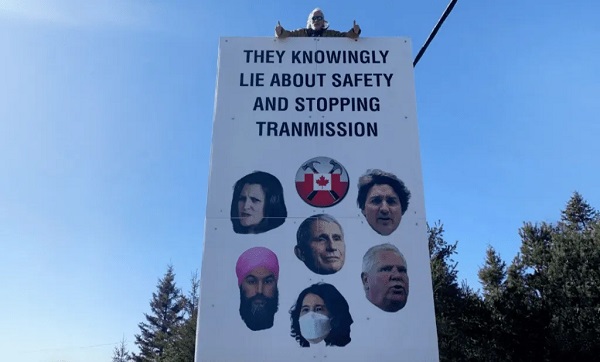
 COVID-198 hours ago
COVID-198 hours agoOntario man launches new challenge against province’s latest attempt to ban free expression on roadside billboards
-

 Energy16 hours ago
Energy16 hours agoThis Canada Day, Celebrate Energy Renewal
-
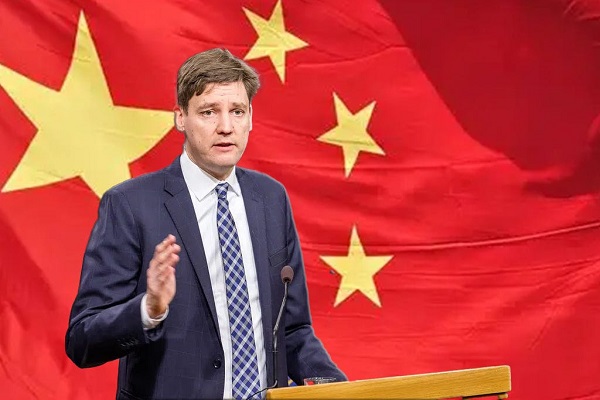
 Business1 day ago
Business1 day agoWhile China Hacks Canada, B.C. Sends Them a Billion-Dollar Ship Building Contract
-
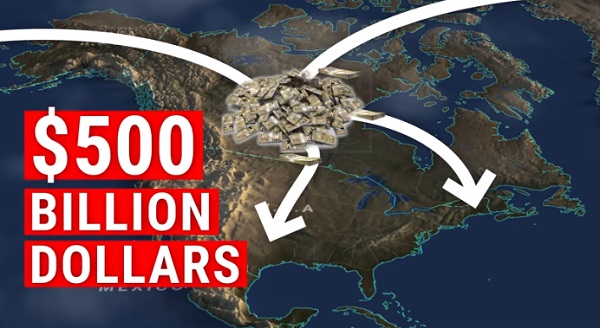
 Alberta1 day ago
Alberta1 day agoSo Alberta, what’s next?
-
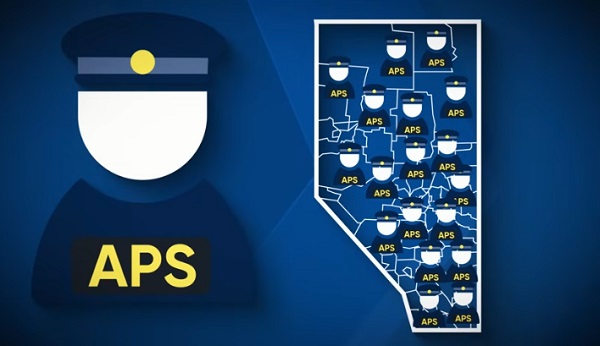
 Alberta7 hours ago
Alberta7 hours agoAlberta Next Takes A Look At Alberta Provincial Police Force
-
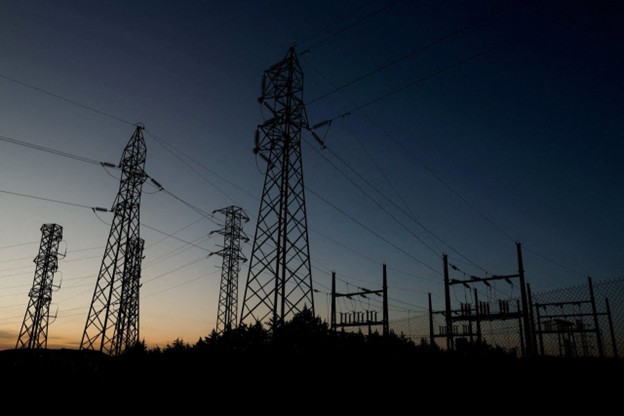
 Bjorn Lomborg1 day ago
Bjorn Lomborg1 day agoThe Physics Behind The Spanish Blackout
-

 Alberta9 hours ago
Alberta9 hours agoCanadian Oil Sands Production Expected to Reach All-time Highs this Year Despite Lower Oil Prices
-
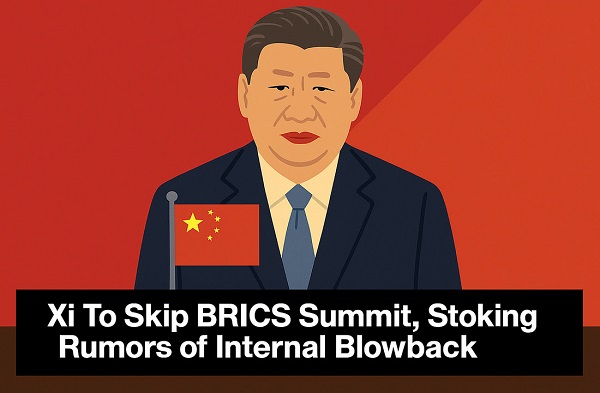
 International10 hours ago
International10 hours agoPresident Xi Skips Key Summit, Adding Fuel to Ebbing Power Theories










